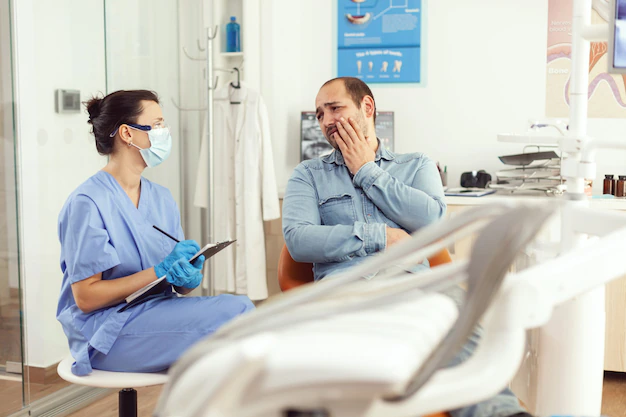If you’ve ever needed dental restoration, then you know that there are many dental procedures and treatments for a wide range of dental issues. From fillings and crowns to implants and bridges, dental restoration is an important part of maintaining your oral health. If you’re looking for dental restoration in Berwyn, IL, it’s important to understand the different dental restoration procedures so you know what to expect. Here are seven common dental restoration types and their associated treatments.
7 Common Dental Restoration Procedures
1. Fillings
Fillings are one of the most common dental restorations used to restore a damaged tooth. Fillings can be made from metal or composites, and they’re used to repair cavities, chips, or cracks in the dental enamel. Your dentist in Berwyn can use a dental drill to remove any decay from the tooth before filling it with the material of your choice.
2. Crowns
Dental crowns are used for more severe dental damage than fillings are suitable for. Crowns are dental caps that fit over the entire tooth and restore its shape, size, and strength. Your dentist in Berwyn typically uses dental crowns to protect a cracked or broken tooth, fix a dental implant, or cover up a large dental filling.
3. Bridges
A dental bridge is used when a tooth is missing due to dental decay, injury, or extraction. The bridge is made up of an artificial dental crown on one end and a dental crown attached to adjacent teeth on the other end. This helps fill in the gap from the missing tooth.
4. Implants
Dental implants are metal frames that are surgically placed into your jawbone. The dental implant serves as an anchor for the dental crown or bridge that will be put in place of the missing tooth or teeth. Implants are considered a permanent dental solution, and they provide a strong base for dental restorations.
5. Dentures
Dentures are removable dental appliances used to replace missing teeth. Dentures are typically made of acrylic and dental resin, and they’re custom-made to fit your mouth. They can be full or partial dentures depending on the number of teeth being replaced.
6. Inlays and Onlays
Inlays and onlays are dental restorations used to treat dental cavities and cracks. They’re made of dental porcelain or composite materials, and they can be used in place of dental fillings for more severe dentaldamage. Inlays are placed within the cusps of your teeth, while onlays extend to one or more dental cusps.
7. Veneers
Dental veneers are thin shells made of dental porcelain that are attached to the front surfaces of your teeth. They’re used to restore dental damage, whiten discolored teeth, and even close gaps between your teeth. Our Berwyn dentist will typically take dental impressions in order to make sure your dental veneers fit perfectly.
Conclusion
No matter what dental restoration procedure you’re looking for, it’s important to consult with a qualified dental expert. Our Berwyn dentist can help you determine the right dental solution for your unique dental needs and ensure that your dental restoration is safe and effective. With the right dental restoration, you can restore a healthy and beautiful smile.
FAQs
Q: How long do dental restorations last?
A: The length of time dental restorations last depends on the type of dental restoration procedure you choose. Generally speaking, dental fillings, crowns, and bridges can last up to 15 years with proper dental care. Dental implants and dentures can last up to 10-15 years, while dental veneers can last up to 20 years.
Q: Are dental restorations expensive?
A: The cost of dental restorations varies depending on the type of dental procedure you choose, as well as the dental clinic you go to. However, dental restorations are typically more affordable than other dental treatments such as dental implants or dentures.
Q: Is it painful to get dental restorations?
A: Most dental restorations can be done without any pain or discomfort. Your Berwyn dentist will typically apply a local anesthetic before the dental restoration procedure to ensure that you don’t feel any pain or discomfort during the process.

